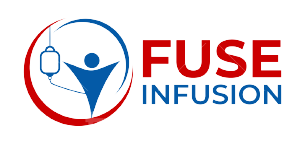Medical advancements have undoubtedly enhanced our ability to combat various ailments, and reclast infusion stands as a treatment option for individuals diagnosed with osteoporosis. However, like any medication, it is crucial to be aware of its potential long-term side effects and associated risks.
In this blog post, we will delve into the long-term side effects of reclast infusion, shed light on its potential dangers, and explore how long these side effects may persist.
Reclast Infusion
Reclast, also known as zoledronic acid, is a medication used primarily in the treatment of osteoporosis, a condition characterized by decreased bone density and an increased risk of fractures.
Reclast infusion is administered intravenously and works by inhibiting the activity of cells called osteoclasts, which break down bone tissue. By reducing bone breakdown, Reclast helps to maintain bone density and minimize the risk of fractures.
Long-Term Side Effects of Reclast Infusion
Reclast infusion, a commonly prescribed treatment for osteoporosis, has proven effective in managing bone density loss and reducing fracture risk.
While it offers benefits in the short term, it is crucial to understand the potential long-term side effects associated with this medication. In this blog post, we will explore the long-term side effects of reclast infusion to provide you with the information necessary to make informed healthcare decisions.

Reclast infusion side effects
Musculoskeletal Pain
One of the most commonly reported long-term side effects of reclast infusion is musculoskeletal pain. Individuals may experience persistent joint and muscle pain, which can significantly impact their daily lives.
The pain may range from mild discomfort to severe aches and can affect various areas of the body, including the back, hips, knees, and shoulders. It is essential to communicate any pain or discomfort to your healthcare provider to determine appropriate management strategies.
Renal (Kidney) Complications
Reclast is metabolized and eliminated by the kidneys, making the renal system vulnerable to potential complications.
Although rare, long-term use of reclast infusion has been associated with kidney problems, such as impaired kidney function and acute renal failure.
If you experience symptoms like changes in urination patterns, swelling, or fatigue, it is crucial to notify your healthcare provider promptly for further evaluation.
Osteonecrosis of the Jaw (ONJ)
Osteonecrosis of the jaw is a severe but rare side effect associated with reclast infusion. This condition involves the death of jawbone tissue and can cause symptoms such as jaw pain, swelling, gum infections, and the development of open sores in the mouth.
ONJ often occurs after dental procedures, so it is essential to inform both your dentist and healthcare provider about your Reclast treatment before any dental work is performed.
Gastrointestinal Issues
Some individuals may experience gastrointestinal problems as a long-term side effect of reclast infusion. These issues may include nausea, vomiting, abdominal pain, indigestion, and gastrointestinal inflammation.
If you are experiencing persistent or severe gastrointestinal symptoms, it is crucial to discuss them with your healthcare provider to determine the appropriate course of action.
Hypocalcemia
Hypocalcemia, a condition characterized by low levels of calcium in the blood, can occur as a result of reclast infusion. This can lead to symptoms such as muscle cramps, numbness or tingling in the extremities, and even seizures in severe cases.
Regular monitoring of calcium levels and appropriate supplementation may be necessary for individuals at risk of developing hypocalcemia.
Dangers of Reclast Infusion
In addition to the potential long-term side effects mentioned above, there are certain risks associated with reclast infusion that should not be overlooked:

Acute Flu-like Symptoms:
Shortly after receiving a reclast infusion, individuals may experience flu-like symptoms, including fever, chills, headache, and body aches. While these symptoms typically resolve within a few days, they can be quite distressing.
Allergic Reactions:
Some individuals may develop an allergic reaction to reclast infusion, characterized by symptoms such as rash, itching, swelling, or difficulty breathing. It is vital to seek immediate medical attention if any signs of an allergic reaction occur.
How Long Do Reclast Side Effects Last?
The duration of Reclast side effects can vary from person to person. In most cases, the acute flu-like symptoms subside within a few days. However, musculoskeletal pain and other long-term side effects may persist for weeks, months, or even longer. It is essential to consult with your healthcare provider to discuss any concerning or persistent side effects.
Get Reclast Infusion Treatment Today
Reclast infusion is an important treatment option for individuals with osteoporosis, but it is crucial to understand and consider the potential long-term side effects and associated dangers.
Musculoskeletal pain, renal complications, and osteonecrosis of the jaw are among the possible side effects that may persist beyond the initial infusion. Additionally, acute flu-like symptoms and allergic reactions can occur shortly after treatment.
By being well-informed and discussing your concerns with a healthcare professional, you can make an informed decision about the potential benefits and risks of Reclast infusion for your individual situation.
Fuse Infusion offers you biologic infusion and reclast infusion therapy in a safe and secure setting. Contact us today to learn more about our treatment options!

